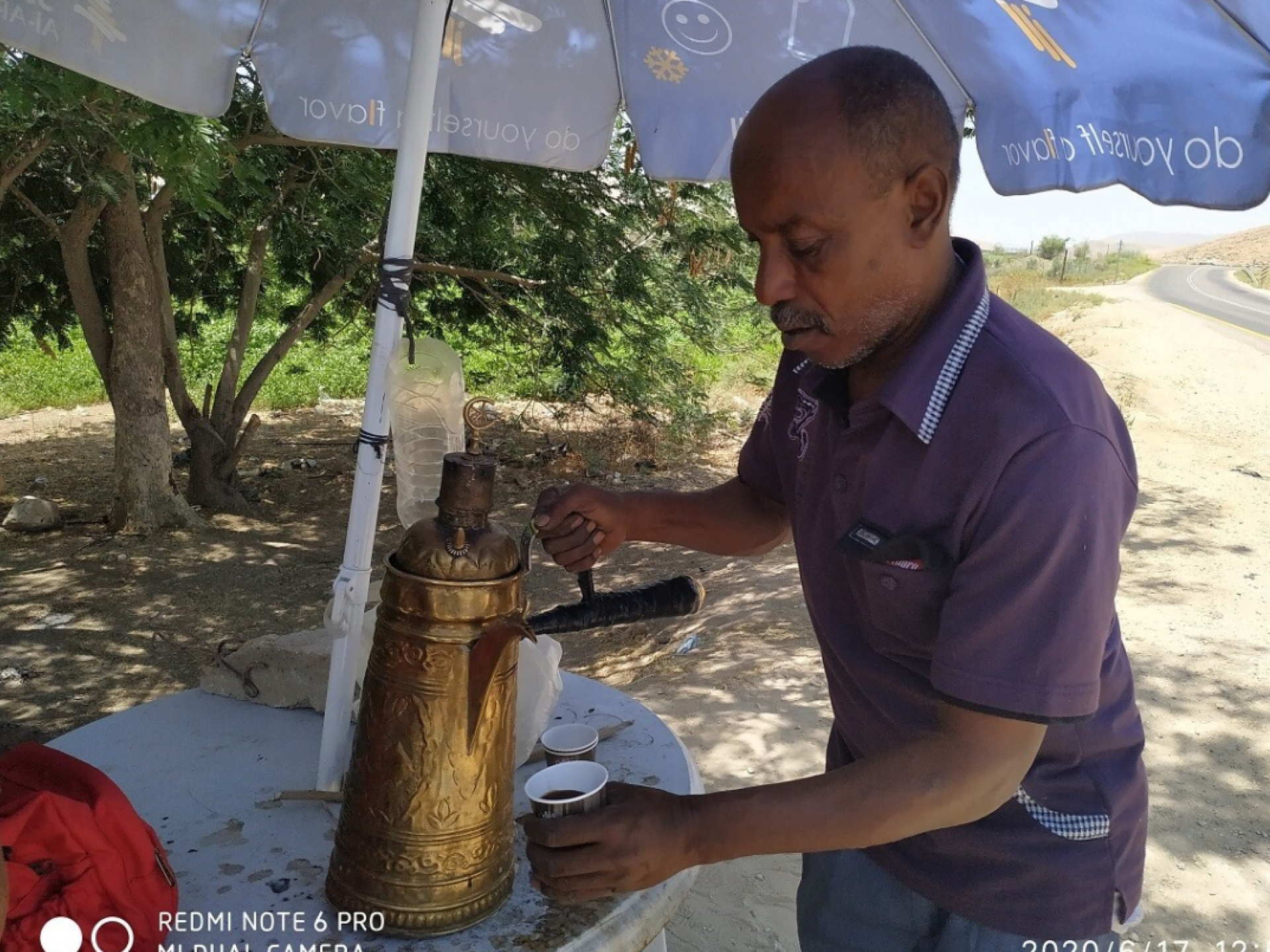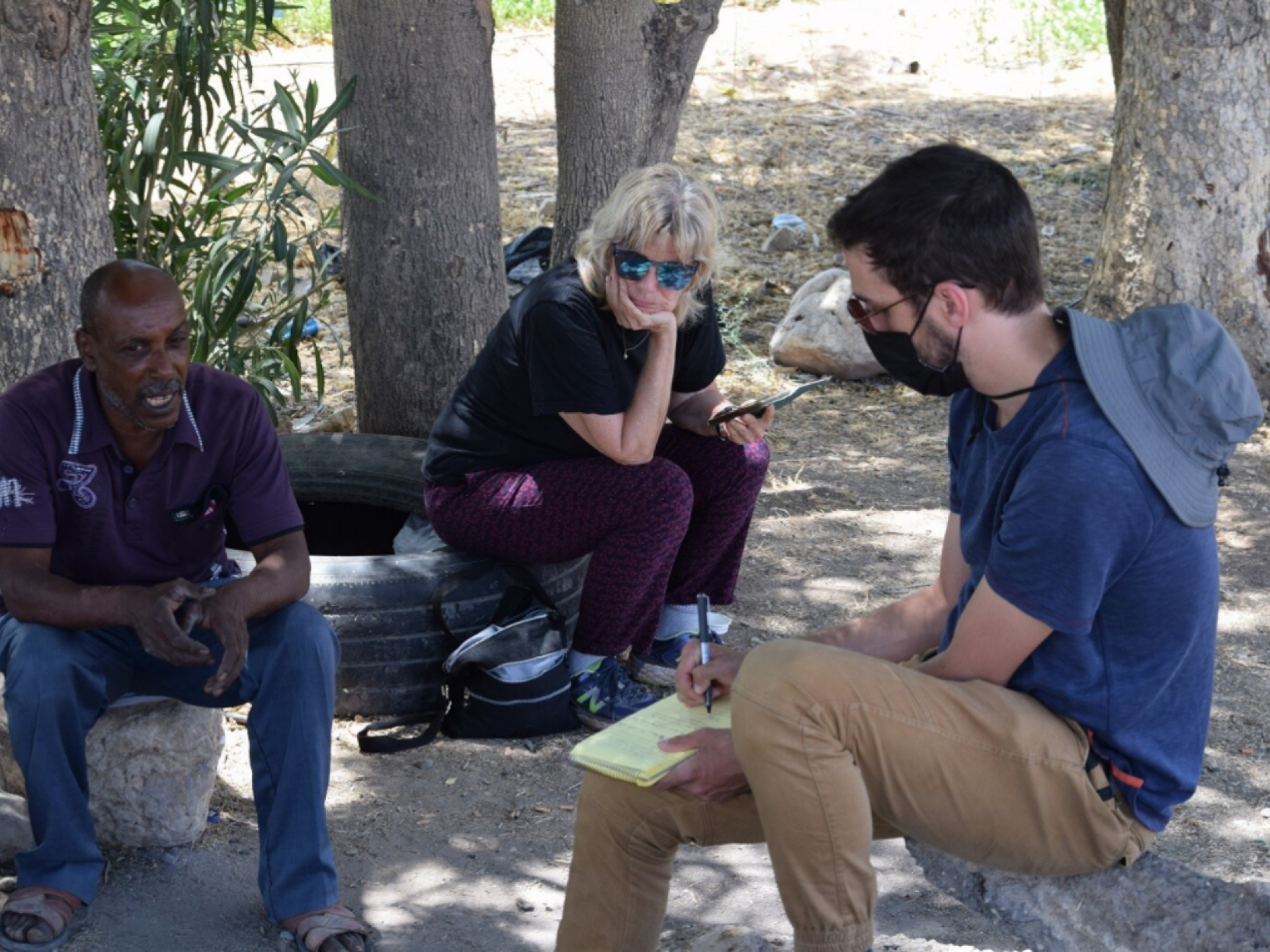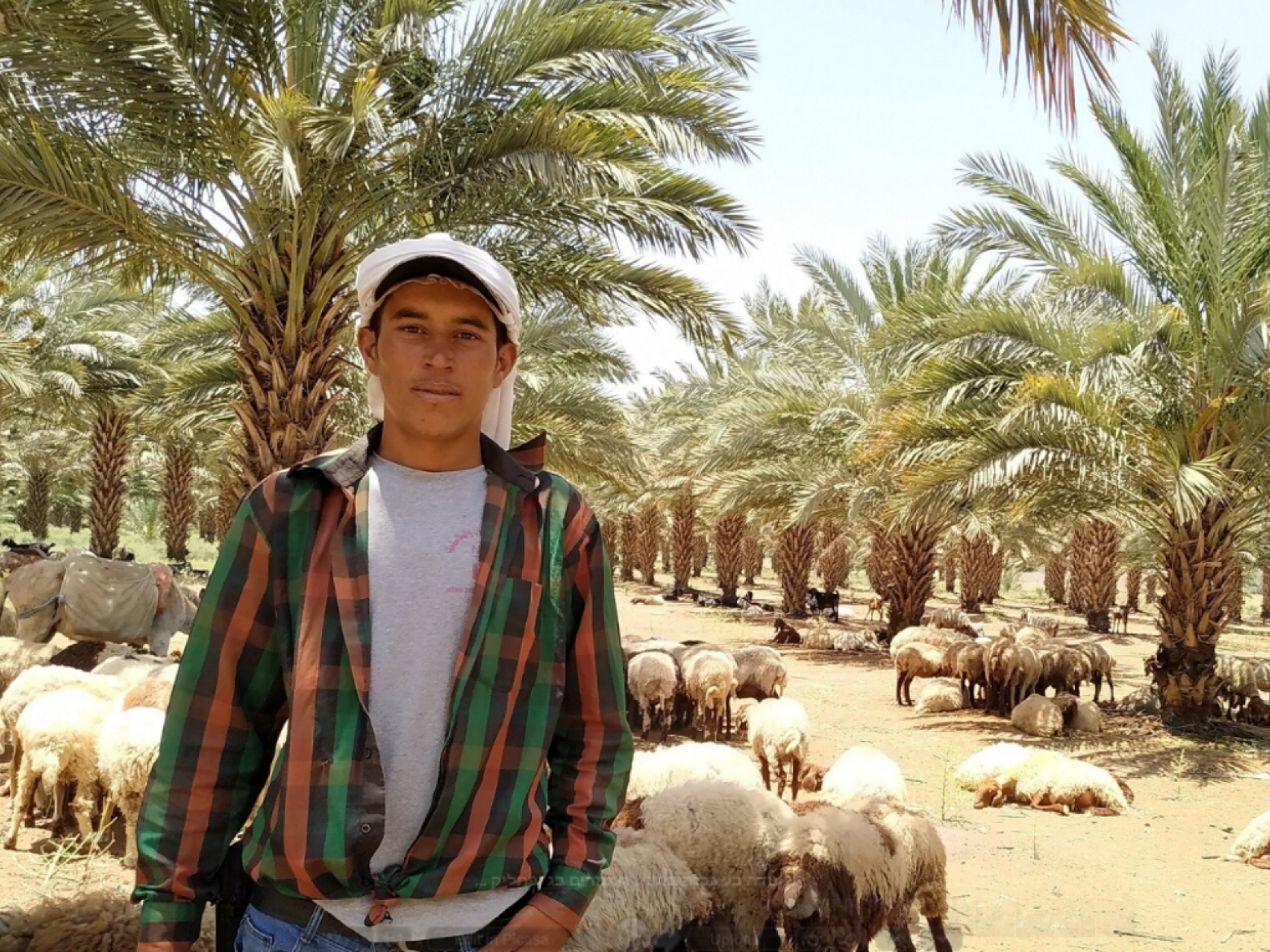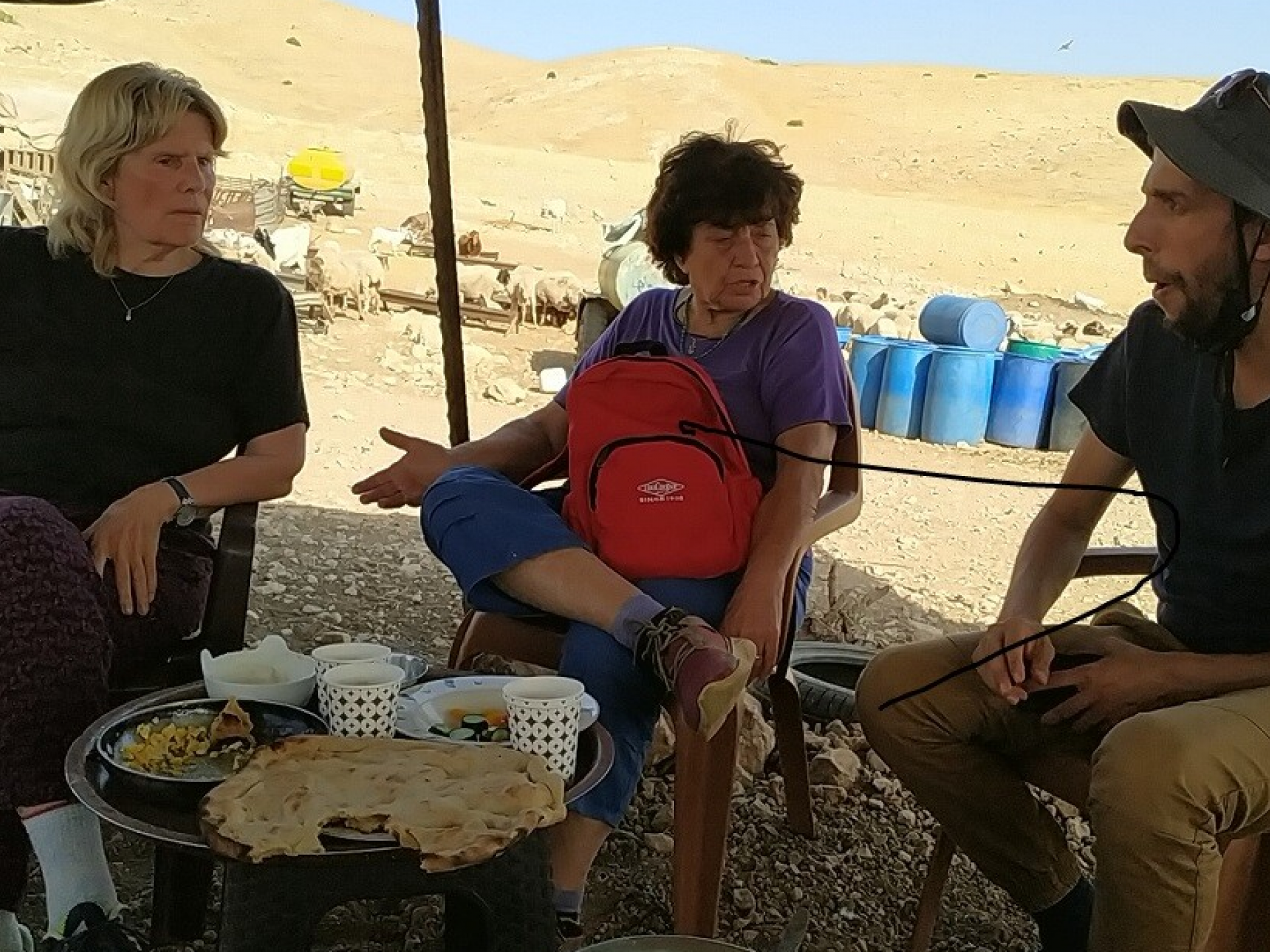The Jordan Valley: A tour with a New York Times journalist
[8:30 a.m. until 8:30 p.m.]
Since the Corona-virus lockdown, we have made it our habit to bring fruits and vegetables to three families in the area, since for months they had not gotten back to full activity and nourishment, because of the situation. We stopped at the entrance to Ariel to do some shopping at a store belonging to Kifl Hareth villagers. We met Sharon (who brought a load of tomatoes) at 10:30 a.m. at Hamra Checkpoint. Both this checkpoint and Maale Efrayim Checkpoinmt were unmanned. We drove to the Jiftlik grocery store, but the nice owner was not there, and his son told us he had gone to Nablus. From there we proceeded to the Ka’abana family, who had undergone a serious road accident where they lost their baby daughter, whose mother spent a whole month unconscious in the hospital. The accident took place when they were expelled from their temporary home at Al Hadidiya (every summer they would move to Al Hadidiya because of the grazing grounds for their sheep). Father Odeh told us that the tractor pulling the platform on which the family members sat was “taken for investigation” and was released only a month ago, with the injured family having to pay 10,000 NIS for its safekeeping and another 8,000 NIS to the lawyer who failed to get them anything from their insurance.
daughter, whose mother spent a whole month unconscious in the hospital. The accident took place when they were expelled from their temporary home at Al Hadidiya (every summer they would move to Al Hadidiya because of the grazing grounds for their sheep). Father Odeh told us that the tractor pulling the platform on which the family members sat was “taken for investigation” and was released only a month ago, with the injured family having to pay 10,000 NIS for its safekeeping and another 8,000 NIS to the lawyer who failed to get them anything from their insurance.
Sara, the mother who was seriously injured, stood at the entrance of one of the tents, waved us in greeting and asked us not to approach. She is afraid of contagion as she is pregnant. The hosts arrange seats for us at a safe distance. Hana, Odeh’s mother, says that when she visited her mother, they did not hug but only placed their hands on their hearts as a sign of love. She was pregnant too, along with her daughter-in-law, but had a failed birth two months ago, when she was only 3 months along.
Among the homes we saw pipes and asked where their water comes from. What?! They bring their drinking water in tanks tied to a tractor from the Jiftlik area, and use half-salty water separately for washing and their livestock. From the tanker they stretch pipes (the ones we saw) to large black and white containers.
We went down to a date-palm grove across the main road that divides the Jiftlik (12-year old Ayman, Odeh’s brother, led us on as he galloped on donkey-back). Odeh, the most handsome guy in the Palestinian Jordan Valley, greeted us warmly. This year he is shepherding in this grove and paying rent to the owners. The place is wondrous – shady and cool, and filled with grass for the sheep, and there’s even shade with blankets and cushions for a noontime nap…
From there we hurried to see the coffee vendor at the junction of the Jiftlik and road 90, in the shade of a broad tree, next to a green mulukhia field. Here we met the journalist and his photographer. The coffee vendor lives in Jiftlik and works in the fields near the junction for 105 NIS a day. He would like to farm independently but there’s no water. Drinking water they receive from the Israeli national company, Mekorot, for he lives in the ‘recognized’ part of Jiftlik village. For farming they have to bring water from En Shibli.
We proceeded to meet Abu Saker. On our way I spoke with our guests about the problem of inaccessibility – blocked tracks (to Al Hadidiya, Ras al Ahmar and the West Bank in general) and the barriers we had passed. It is less prominent now – for a year the army has not raised the dirt dykes higher and they have already grown grass. Presumably if annexation goes ahead, these monsters that rise in the beautiful landscape, separating the farming area of Atouf valley from the part that Israel has allotted the settler-colonists, where that shameful contrast is dominant between the settler-colonies’ luscious green and the yellow-brown fields of the water-deprived Palestinians.
The journalist was deeply impressed with his interview of Abu Saker who also took them on a walking tour around the place in 38-degree (centigrade) heat. The journalist tried to interview Abu Saker’s wife, Ruqia, as well but she was self-conscious and kept silent.
We then drove to visit Burhan, who was also interviewed, and after him came his daughter Shima, 15-years old, who aired her opinions about the planned annexation and occupation with assertive clarity. Interviewed Palestinian women are few and far between, so it was refreshing to listen to her.
We then held a short visit to Rima, and finally went to Ras Al Ahmar to visit the elderly couple who 5 years ago were still living in Makhoul, left it but due to the frequent home demolitions, and because the Gokhia barrier that separated them from their children who live in Tamoun. When we came the couple were hosting their daughter, son and daughter-in-law and grandchildren. The son holds a permit to enter Israel and work there, but has no employment now after the lockdown. The situation is typical – the children left the Jordan Valley, and no longer live the way their parents do. Their life focuses on seeking work inside Israel, and their permits are issued and taken away quite arbitrarily.






